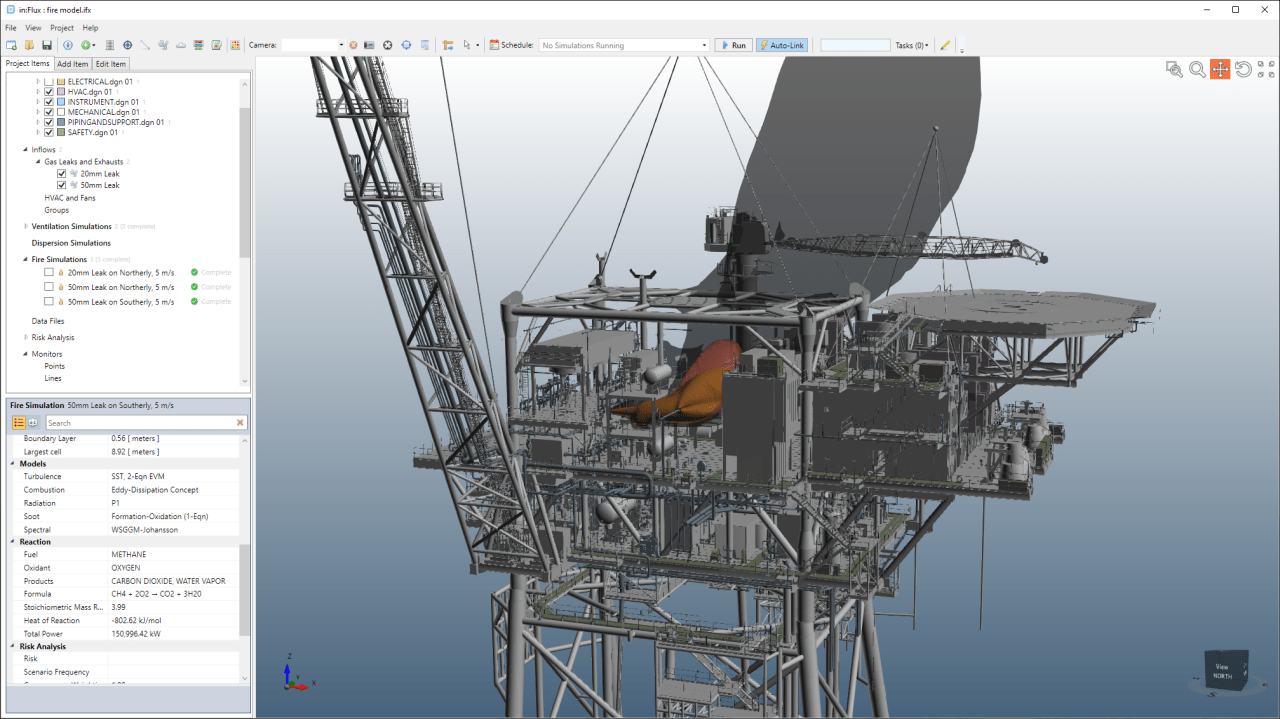The most common request we get from our users is to add a fire modeling capability to in:Flux CFD.
Yet there are existing, established fire modeling CFD codes out there – so why is everyone looking for something new?
The truth is that fire modeling is an onerous task, and often a bottleneck delaying project completion. When designing in:Flux, our goal was to package the most modern CFD tech into a lightning-fast environment that was capable of handling thousands of simulations. Not just for dispersion modeling and risk-based gas mapping, but also for fire and eventually explosion too.
And we’ve been working on fire modeling…for over two years. As any CFD developer knows, a fire model isn’t one thing – it’s a reaction model, a combustion model, a spectral model, a radiation model, and a soot model, all of which have to work in harmony. As we’re bringing it all together for the commercial release, I’ll be writing a series of posts about our journey and choices along the two-year path.
Comment, ask, demo or get involved in any way that you like.

Find us